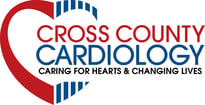Stroke is the third leading cause of death in America, and the leading cause of long-term disability. Every year, about 800,000 Americans have a stroke; 75% are first attacks, and 25% are recurrent attacks. And yet, despite the fact that someone in the U.S. experiences a stroke every 45 seconds, most people know very little about them.
What exactly are strokes, and why do they happen?
A stroke is an extreme medical emergency that occurs when the blood supply to the brain or part of the brain is cut off. Because brain cells require the oxygen and nutrients in the blood to survive, when the supply is restricted, brain cells begin to die; this can lead to brain damage and death.
There are two main types of stroke. Ischemic strokes are caused by the blood flow being blocked by a blood clot, and account for 80% of all cases. Hemorrhagic strokes are caused when a vessel supplying the brain with blood becomes weakened and bursts. Transient ischemic attack (often referred to as "mini-stroke" or TIA) is a related condition in which the supply of blood to the brain is temporarily interrupted; it is considered a serious condition because it is often a warning sign that one is at increased risk of a full stroke.
Who is at risk of suffering a stroke?
Most strokes occur in people over the age of 65, but 25% occur in those under that age. Smoking, being overweight or obese, lack of exercise, and poor diet are considered major risk factors for stroke, as are high blood pressure, high cholesterol, atrial fibrillation (irregular heartbeat), and diabetes. There are genetic risk factors as well, meaning that if you are of African American, south Asian, or Caribbean heritage your risk of stroke is higher.
How are strokes diagnosed and treated?
An ischemic or hemorrhagic stroke can produce symptoms of loss of balance, trouble walking, speech problems, dizziness, blurred vision, severe headache, weakness, numbness, or paralysis. If you experience any of these symptoms, you should call for help immediately. Smaller strokes, "silent strokes," and TIAs may not produce any overt symptoms, but can still cause brain damage. Thus when heart doctors in Hackensack are checking for signs of a stroke, they may use blood pressure and blood tests, ultrasound to check for blocked blood flow, arteriography, and MRI or CT scans as diagnostic tools.
If a full stroke has occurred, the first priority in treatment is to restore blood flow to the brain. This can involve the use of drugs that break up blood clots, or surgical procedures such as carotid endarterectomy and angioplasty. Treatment of hemorrhagic stroke is different than the treatment of ischemic stroke, and can involve aneurysm clipping, aneurysm embolization, and other procedures.
After a serious stroke, most patients will require rehabilitation, depending on the area of the brain affected by the stroke, and the amount of tissue damaged. They may lose the ability to walk or to speak, and may experience memory problems or paralysis, often on only one side of the body.
How can stroke and TIA be prevented?
The best way to be proactive about stroke is to get regular checkups from your local heart care specialists in Hackensack. Give us a call at 201-299-4479 or go online and we'll set up an examination to determine your risk for stroke. Based on our findings, we can make recommendations to help you lower your risk. For more information about any of these subjects, you can also surf around our website. Lots of helpful information and videos too!



